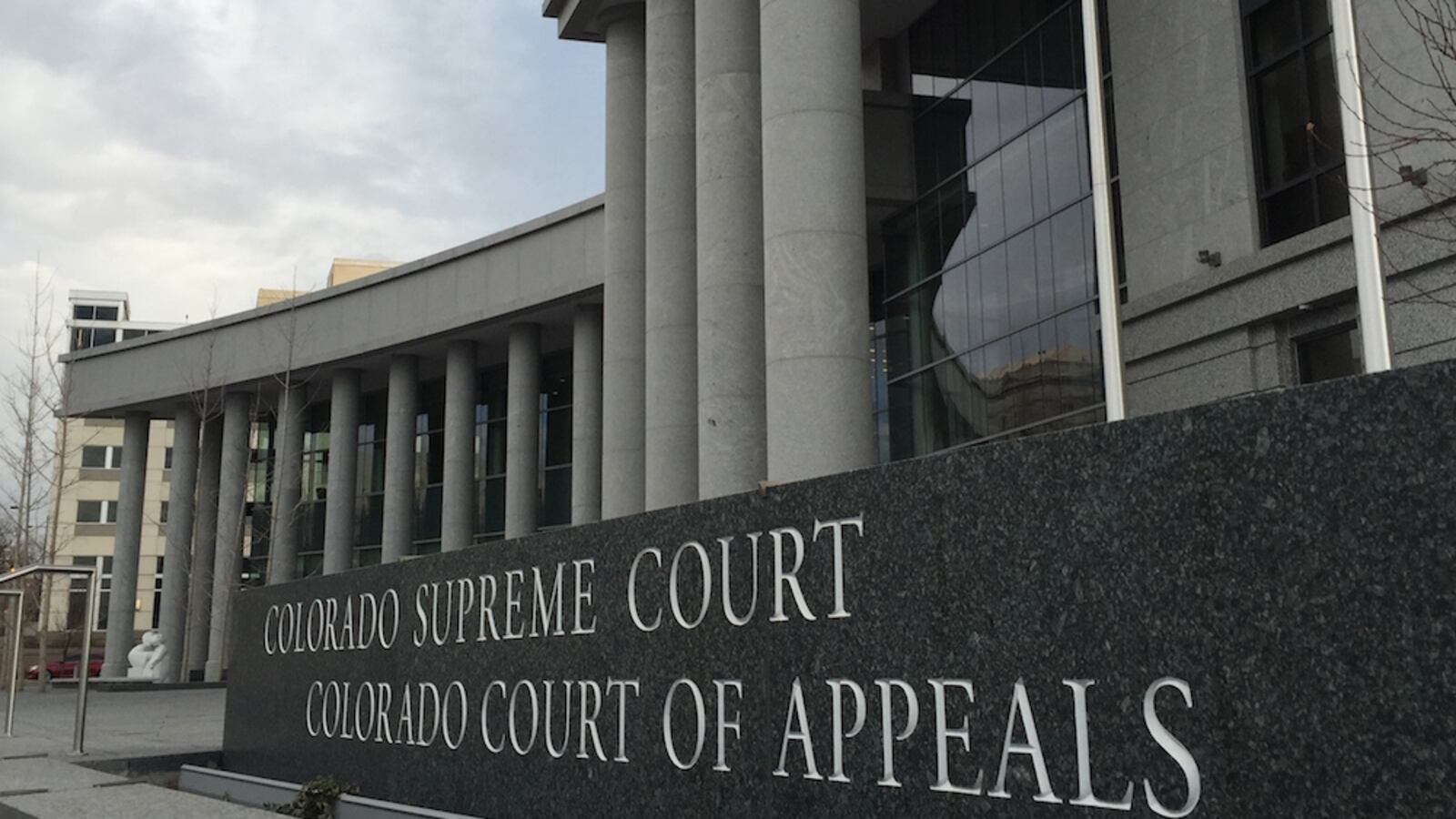The two sides in a key school funding case offered sharply different interpretations in oral arguments before the Colorado Supreme Court on Wednesday.
The lawyers’ cases were interrupted repeatedly by the justices trying to tease out the meaning of the lawyers’ arguments.
The arguments were a key step in a lawsuit named Dwyer v. State, which challenges the constitutionality of the formula that the legislature has used since 2010 to reduce annual K-12 support and balance the state budget.
Lawyer Sean Connelly, representing the plaintiffs, argued that the formula (known as the negative factor), was devised with “the sole intent of circumventing the plain language and intent of Amendment 23,” the constitutional amendment that governs school funding.
But Senior Assistant Attorney General Jonathan Fero, representing the state, argued that Amendment 23 has clear language requiring annual growth only in “base” school funding, not all K-12 support. The language “provides the only answer the court needs because its meaning is plain,” Fero said.
The two sides have different interpretations of such key terms as “base funding” and “per-student funding,” a gap alluded to by Justice Nathan Coats.
“Reading the two sets of briefs, it’s like two ships passing in the night,” Coats remarked.
The case has crucial implications for Colorado’s school funding system and the overall state budget.
A ruling in favor of the plaintiffs could mean hundreds of millions in additional school support in future years but a possible severe squeeze on other state programs, including higher education. High court rejection of the suit likely would set a “new normal” for K-12 funding and be a bitter disappointment for school districts.
At issue is the meaning of Amendment 23, the 2000 constitutional provision that requires annual K-12 spending increases based on inflation and enrollment growth.
In 2010, the legislature created the negative factor formula to control school spending as lawmakers struggled to balance the overall state budget. The legal reasoning behind the negative factor is that A23 applies only to base per-student funding, not to additional state funds districts receive to compensate for staff cost of living, size, number of at-risk students, and other factors.
Prior to the budget crisis brought on by the 2008 recession, the legislature calculated K-12 increases based on both base and factor funding.
Fero argued that Amendment 23’s definition of the base is clear, and “there can be no question what this language refers to.”
The plaintiffs argue that use of the negative factor is “a charade.” Connolly said, “We should win because the state’s premise is wrong.”
Timothy Macdonald, the second plaintiffs’ lawyer who spoke, said use of the negative factor “renders Amendment 23 a hoax.”
Connelly and Madonald argued that the actual effect of using the negative factor has been to cut base funding, not factor funding.
Fero stuck to his position, saying, “I think they are trying to overcomplicate the case.”
Coats summed up the back and forth by saying, “It’s a question of what the base consists of.”
Use of the negative factor has created an annual funding shortfalls of about $1 billion. Despite improving state revenues and district pressure on lawmakers, the legislature has been able to make only modest reductions in the negative factor. It’s pegged at $855 million for the 2015-2016 school year. School funding will be $6.24 billion next year, compared to $5.93 billion in the school year that ends June 30.
Background of the case
The suit was filed in June 2014 by a group of parents, school districts and education organizations. The lead plaintiffs are Lindi and Paul Dwyer, who have four daughters in the Kit Carson district, and the case takes their name. A Denver judge rejected the state’s motion to dismiss the suit last December, sending the case to the state’s Supreme Court.
In addition to Connelly and Macdonald, the plaintiffs are being represented by Boulder public interest lawyer Kathleen Gebhardt.
The Dwyer case has attracted several friend-of-the-briefs in both sides. Briefs supporting the plaintiffs have been filed by the Colorado Association of School Boards and the Colorado Education Association, among others. A brief supporting the state’s position was filed by several business groups, including the Denver Metro Chamber of Commerce.
There’s no set deadline for the seven-member high court to issue a ruling.
Dwyer is the second major school-funding case to reach the high court in two years.
In late May 2013 the court rejected plaintiffs’ claims in the long-running Lobato v. State suit, which was a much broader challenge to the state’s school funding system. (See Chalkbeat’s Lobato archive here.)
The court issued its Lobato ruling less than three months after hearing oral arguments.

